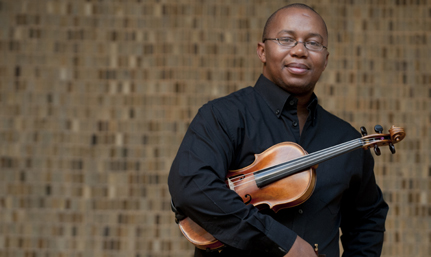|

|
|
Samson Diamond
06 February 2013 |
The Odeion String Quartet has a new member, a young accomplished violinist with a string of awards to his name. Samson Diamond, who won the Standard Bank Young Artist Award for Music in 2010, has joined the quartet. He is the first male member the quartet has had for about five years. The Soweto-born violinist replaced Denise Sutton, former leader and first violinist. He will lead the quartet, a flagship of the university and the only resident string quartet at a South African university. The other three members are Sharon de Kock (violin), Jeanne-Louise Moolman (viola) and Anmari van der Westhuizen (cello).
Twenty-eight year old Diamond, a graduate of the Royal Northern College of Music in Manchester, UK, says he is looking forward to working with students from the Odeion School of Music. “I am sure there are many talented students here.”
The musician, who obtained both his Bachelor of Music Honours degree and his Masters of Music Performance degree with distinction, will be based in Bloemfontein on a full time basis. As a member of the quartet, he will be giving concerts, coaching chamber music for the various chamber ensembles and will also give individual lessons to some of the violin students at the School.
Diamond, who started playing the violin at age ten, boast a long list of achievements. At age 12, he was leader of the Buskaid Soweto String Ensemble, one of the country's prominent youth projects. He was a founding member of the jazz classical band Quattro Fusion and former leader of the Diamond quartet. He has performed before many distinguished guests, including Queen Elizabeth II, the Duke of Edinburgh and former presidents Nelson Mandela and Thabo Mbeki.
Diamond says being the first male member in years will not bring about a change in the quartet He says it is about the standard of playing and the calibre of music.
“Music is music whether you work with men or women.”
Diamond’s first performance as member of the quartet will be on 21 February 2013. Details about the performance will be communicated later.